用cc5調(diào)試的時候�,有時候總是曝出在low-power mode下工作�?這個是為什么?謝謝前輩們指點�,新手
2014-06-29 10:42:21
分享一本書:Design of low-voltage low-power CMOS operational amplifier cells
2021-06-22 07:01:47
External-Sync Power SupplyThis paper describes the design of a low?cost 90 Wflyback switching power
2009-03-27 15:56:42
, but is a low cost, compact (no transformer)2W to 6W power supply accepting the world wide range ofinput voltage and frequency.
2009-05-12 11:01:35
? Low-power ? Cost-effective? Shows implementation of smbuslib as Master and Slave? Uses TMP006
2015-03-23 10:02:29
SWITCH POWER SUPPLY DESIGN
2012-08-16 11:53:46
The MAXQ2000 microcontroller is a low-power, 16-bit device that incorporates a liquid-crystal
2009-02-06 13:32:19 29
29 Low-Power DC-DC Converter Derives 5V From 3V Battery。
2009-04-30 09:16:32 14
14
Low-Power Digital Vlsi Design:An Overview:
2009-07-25 16:41:21 0
0 The MAXQ612/MAXQ622 are low-power, 16-bit MAXQ® microcontrollers designed for low-power
2010-03-03 22:26:20 20
20 The ADS8331 is a low-power, 16-bit, 500k samples-per-second (SPS) analog-to-digital converter (ADC
2010-06-03 12:25:21 26
26 The TLC2551, TLC2552, and TLC2555 are a family of high performance, 12-bit, low-power, miniature
2010-06-05 16:26:45 26
26 The DAC7513 is a low-power, single, 12-bit buffered voltage output Digital-to-Analog Connector (DAC
2010-06-08 11:51:09 69
69 The PCM1870 is a low-power stereo ADC designed for portable digital audio applications
2010-06-13 10:21:21 35
35 The PCM1870A is a low-power stereo ADC designed for portable digital audio applications
2010-06-13 10:28:56 14
14 The TLV320ADC3101 is a low-power, stereo audio analog-to-digital converter (ADC) supporting
2010-06-13 10:49:20 34
34 The TLV320AIC3110 is a low-power, highly integrated, high-performance codec which supports stereo
2010-06-25 22:49:02 29
29 The TLV320AIC36 (sometimes referred to as the AIC36) is a flexible, low-power, low-voltage stereo
2010-06-26 09:51:25 27
27 The TLV320DAC3120 is a low-power, highly integrated, high-performance mono DAC with 24-bit mono
2010-06-26 20:00:53 35
35 VLSI systems. Thispaper reviews several approaches for low-power implementationsof building blocks for digital subscriber line
2010-06-27 22:36:39 2
2 The CC11x1-Q1 device family is designed for very low-power wireless applications. The circuits
2010-06-29 19:54:02 21
21 The CC11x1-Q1 device family is designed for very low-power wireless applications. The circuits
2010-06-29 19:57:48 18
18 ) designed forminiature, ultra low-power, audio signalprocessing applications. The
2010-07-01 14:34:44 3
3 The CC2400 is a true single-chip 2.4 GHz RF transceiver designed for low-power and low
2010-07-02 12:59:58 57
57 The AUP family is TI’s premier solution to the industry’s low-power needs in battery-powered
2010-07-17 20:11:12 19
19 The AUP family is TI’s premier solution to the industry’s low-power needs in battery-powered
2010-07-17 20:14:11 12
12 The AUP family is TI’s premier solution to the industry’s low-power needs in battery-powered
2010-07-17 20:15:47 10
10 The AUP family is TI’s premier solution to the industry’s low-power needs in battery-powered
2010-07-17 20:17:36 15
15
The AUP family is TI’s premier solution to the industry’s low-power needs in battery-powered
2010-07-29 15:35:09 6
6
The AUP family is TI’s premier solution to the industry’s low-power needs in battery-powered
2010-07-29 15:36:45 12
12 The AUP family is TI’s premier solution to the industry’s low-power needs in battery-powered
2010-08-04 17:40:57 8
8 The AUP family is TI’s premier solution to the industry’s low-power needs in battery-powered
2010-08-06 15:09:38 7
7 The AUP family is TI’s premier solution to the industry’s low-power needs in battery-powered
2010-08-06 23:43:26 26
26 The AUP family is TI’s premier solution to the industry’s low-power needs in battery-powered
2010-08-08 21:18:11 14
14 The AUP family is TI’s premier solution to the industry’s low-power needs in battery-powered
2010-08-08 23:39:07 15
15 The AUP family is TI’s premier solution to the industry’s low-power needs in battery-powered
2010-08-08 23:43:43 19
19 The AUP family is TI’s premier solution to the industry’s low-power needs in battery-powered
2010-08-08 23:49:58 20
20 The AUP family is TI’s premier solution to the industry’s low-power needs in battery-powered
2010-08-08 23:54:55 25
25 The AUP family is TI’s premier solution to the industry’s low-power needs in battery-powered
2010-08-08 23:57:32 22
22 The AUP family is TI’s premier solution to the industry’s low-power needs in battery-powered
2010-08-09 00:13:06 24
24 The AUP family is TI’s premier solution to the industry’s low-power needs in battery-powered
2010-08-09 00:15:18 23
23 The AUP family is TI’s premier solution to the industry’s low-power needs in battery-powered
2010-08-09 00:17:34 30
30 The AUP family is TI’s premier solution to the industry’s low-power needs in battery-powered
2010-08-09 16:12:46 12
12 The AUP family is TI’s premier solution to the industry’s low-power needs in battery-powered
2010-08-09 16:15:42 7
7 The AUP family is TI’s premier solution to the industry’s low-power needs in battery-powered
2010-08-09 16:24:39 10
10 The AUP family is TI’s premier solution to the industry’s low-power needs in battery-powered
2010-08-09 16:26:21 17
17 The AUP family is TI’s premier solution to the industry’s low-power needs in battery-powered
2010-08-09 16:28:33 13
13 The AUP family is TI’s premier solution to the industry’s low-power needs in battery-powered
2010-08-09 16:34:33 14
14 The AUP family is TI’s premier solution to the industry’s low-power needs in battery-powered
2010-08-09 16:38:53 17
17 The AUP family is TI’s premier solution to the industry’s low-power needs in battery-powered
2010-08-09 16:51:01 13
13 The AUP family is TI’s premier solution to the industry’s low-power needs in battery-powered
2010-08-09 17:05:42 16
16 The AUP family is TI’s premier solution to the industry’s low-power needs in battery-powered
2010-08-09 17:08:53 12
12 The AUP family is TI’s premier solution to the industry’s low-power needs in battery-powered
2010-08-09 17:14:52 13
13 The AUP family is TI’s premier solution to the industry’s low-power needs in battery-powered
2010-08-16 16:32:14 27
27 The AUP family is TI’s premier solution to the industry’s low-power needs in battery-powered
2010-08-16 16:35:56 19
19 The AUP family is TI’s premier solution to the industry’s low-power needs in battery-powered
2010-08-16 16:38:33 13
13 The AUP family is TI’s premier solution to the industry’s low-power needs in battery-powered
2010-08-16 16:40:27 21
21 The AUP family is TI’s premier solution to the industry’s low-power needs in battery-powered
2010-08-16 16:43:33 12
12 The AUP family is TI’s premier solution to the industry’s low-power needs in battery-powered
2010-08-16 16:46:08 10
10 The SN75LBC241 is a low-power LinBiCMOSTM line-interface device containing four independent drivers
2010-09-01 23:36:31 12
12 The SN75C185 is a low-power BiMOS device containing three independent drivers and five receivers
2010-09-02 00:09:53 11
11 The OPA2830 is a dual, low-power, single-supply, wideband, voltage-feedback amplifier designed
2010-09-11 20:22:25 24
24 The OPA4830 is a quad, low-power, single-supply, wideband, voltage-feedback amplifier designed
2010-09-11 20:35:32 8
8 The OPA830 is a low-power, single-supply, wideband, voltage-feedback amplifier designed to operate
2010-09-11 20:46:08 22
22 Fabricated using the BiCom-II process, the THS4281 is a low-power, rail-to-rail input and output
2010-09-11 21:56:29 14
14 The THS6072 is a high-speed, low-power differential receiver designed for ADSL communication
2010-09-11 22:19:21 28
28 The OPA2683 provides a new level of performance for dual, very low-power, wideband
2010-09-11 22:39:35 13
13 The OPA3684 provides a new level of performance in low-power, wideband, current-feedback (CFB
2010-09-11 22:45:41 7
7 The OPA4684 provides a new level of performance in low-power, wideband, current-feedback (CFB
2010-09-11 22:55:23 17
17 The THS6032 is a low-power line driver ideal for asymmetrical digital subscriber line (ADSL
2010-09-12 22:28:41 18
18 The OPA2832 is a dual, low-power, high-speed, fixed-gain amplifier designed to operate on a single
2010-09-12 23:31:16 11
11 The OPA3832 is a triple, low-power, high-speed, fixed-gain amplifier designed to operate
2010-09-12 23:33:16 15
15 The OPA832 is a low-power, high-speed, fixed-gain amplifier designed to operate on a single +3.3V
2010-09-12 23:35:36 11
11 The OPA2684 provides a new level of performance in low-power, wideband, current-feedback (CFB
2010-09-13 00:11:19 22
22 The devices in the TLV246x family of low-power rail-to-rail input/output operational amplifiers
2010-09-14 07:08:02 6
6 The TL022 is a dual low-power operational amplifier designed to replace higher power devices
2010-09-17 05:09:04 16
16 the TL06x family of low-power BiFET operational amplifiers. On-chip zener trimming of offset voltage yields precision grades as low as 1
2010-09-17 05:11:36 53
53 The LP2901 is a low-power quadruple differential comparator. The device consists of four
2010-09-23 19:08:18 9
9 The TLV2352 consists of two independent, low-power comparators specifically designed for single
2010-09-23 20:31:42 5
5 The INA331 and INA2331 are rail-to-rail output, low-power CMOS instrumentation amplifiers
2010-09-24 20:50:36 36
36 The INA332 and INA2332 are rail-to-rail output, low-power CMOS instrumentation amplifiers
2010-09-24 20:53:53 52
52 is a low-power, single-supply 2.7-V to 5-V, 3-channel integrated video buffer. It incorporates a selectable 5th order Butterworth fi
2010-09-27 19:31:32 13
13 The TPS799xx family of low-dropout (LDO) low-power linear regulators offers excellent ac
2010-10-19 22:07:48 22
22 The TPS65170 provides a simple and economic power supply solution for a wide variety of LCD bias
2010-11-03 22:34:07 105
105 The device is a Low-power applications processor based on an ARM926EJ-S™ and a C674x DSP
2010-12-12 22:42:54 97
97 Power Supply Features Low VIN and VOUT
Abstract: The MAX1708 DC-DC converter is featured in a circuit that boosts 1
2009-08-31 17:52:45 1066
1066 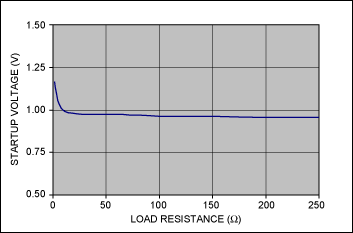
MAX9613, MAX9615 Low-power op amps with self-calibration minimize drift in portable instrumentation and medical applications
2010-10-07 11:25:36 1165
1165 MAX44007 Low-Power Digital Ambient Light Sensor with Enhanced Sensitivity
概述
The MAX44007
2010-12-19 10:25:26 1199
1199 Low-Power Narrowband FM Receiver
2011-04-11 10:54:24 115
115 The MAX44268 is an ultra-small and low-power dualcomparator ideal for battery-powered applications
2012-01-31 10:32:03 35
35 MSP430 MCUs, Passive RF and Low-Power RF Solutions Guide能量收集
2017-10-12 14:58:36 3
3 LTC6362/LTC5599 Demo Circuit - Low-Power I/Q Modulator Driver (Baseband Design)
2021-03-10 13:30:36 0
0 電子發(fā)燒友網(wǎng)為你提供ADI(ADI)MAX30009: Low-Power, High-Performance Bioimpedance Analog Front-End Data Sheet相關
2023-10-13 18:42:02

電子發(fā)燒友網(wǎng)為你提供ADI(ADI)MAX22290-MAX22291: Reinforced, Fast, Low-Power, Two-Channel Digital Isolators
2023-10-16 18:32:51

電子發(fā)燒友網(wǎng)為你提供ADI(ADI)MAX32655: Low-Power, Arm Cortex-M4 Processor with FPU-Based Microcontroller
2023-10-16 18:42:40

電子發(fā)燒友網(wǎng)為你提供ADI(ADI)MAX40023-MAX40024: Low-Noise, Low-Power, Low-Bias-Current Amplifiers Data Sheet相關
2023-10-16 19:26:16

電子發(fā)燒友網(wǎng)為你提供ADI(ADI)MAX41400: Low-Power, Precision Instrumentation Amplifier with Programmable Gain
2023-10-16 19:29:54

電子發(fā)燒友網(wǎng)為你提供ADI(ADI)MAX32570: Low-Power Arm Cortex-M4 Microcontroller with Contactless Radio
2023-10-17 19:18:31

電子發(fā)燒友網(wǎng)為你提供ADI(ADI)MAX40100: Precision Low-Power and Low-Noise Op Amp with RRIO Data Sheet相關產(chǎn)品參數(shù)��、數(shù)據(jù)
2023-11-09 10:07:01

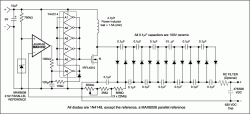
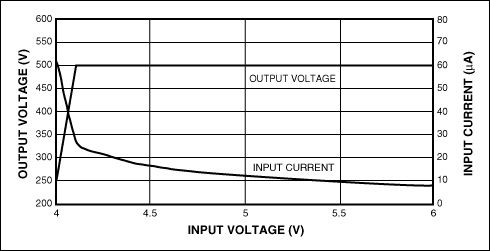
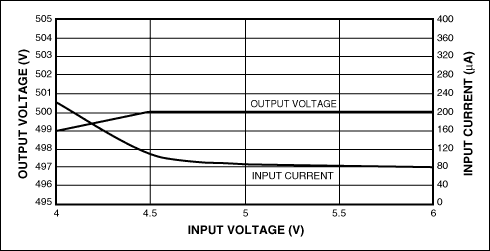
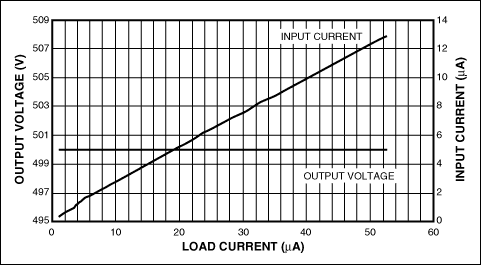
 電子發(fā)燒友App
電子發(fā)燒友App























評論